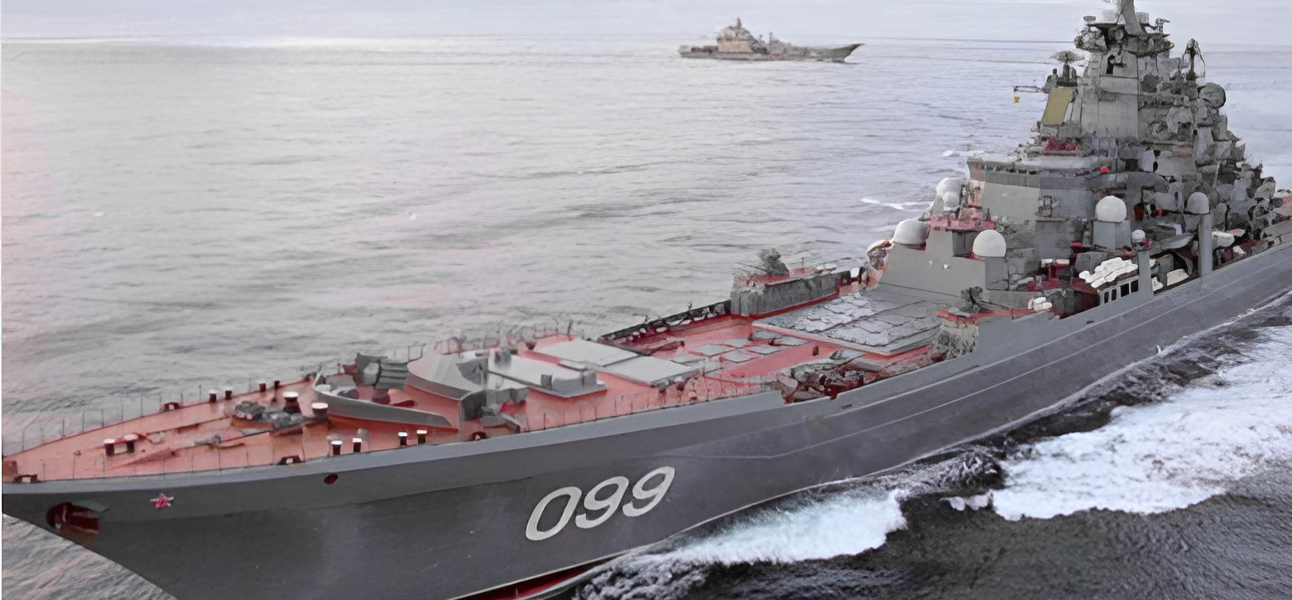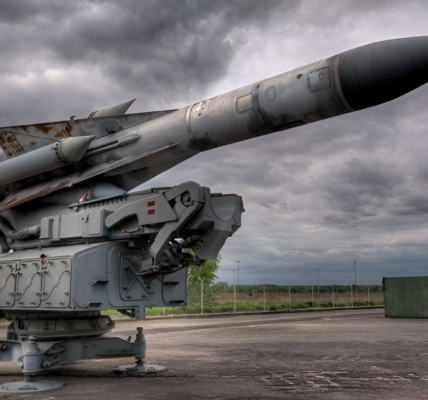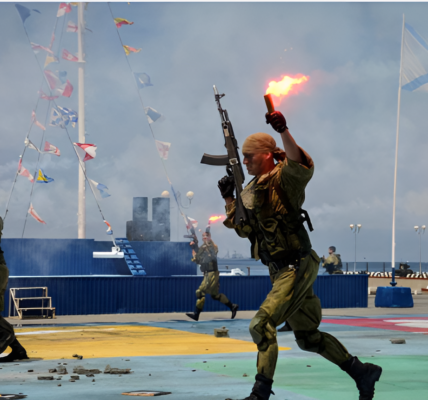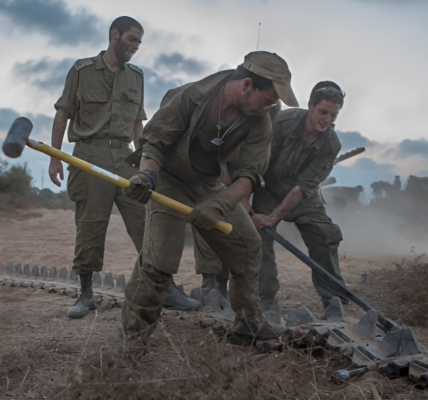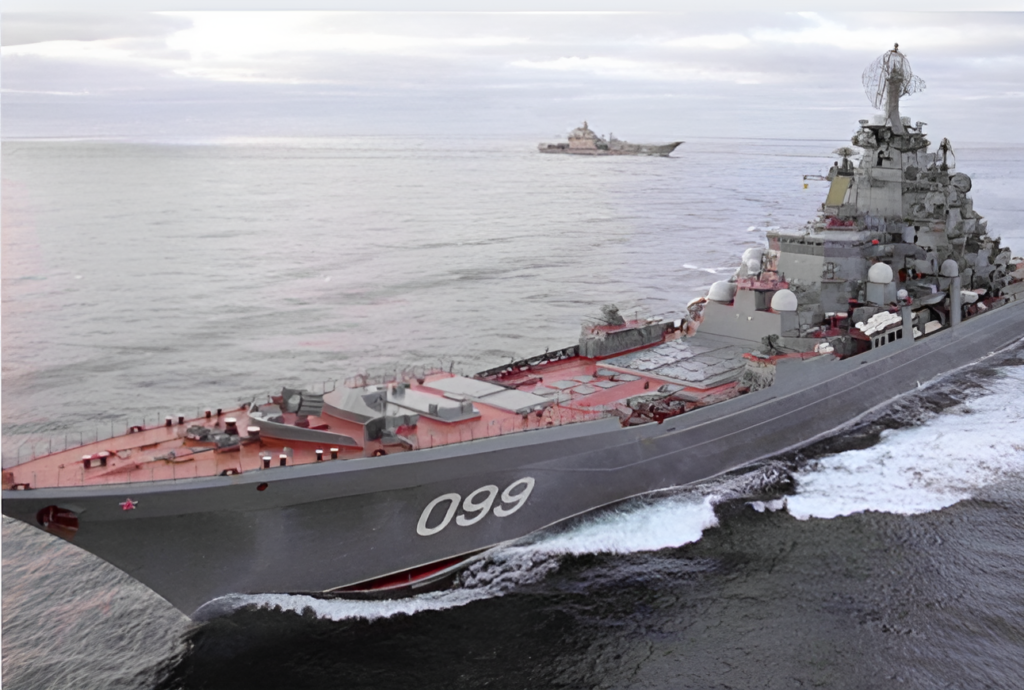
The Russian Navy is facing a critical decision regarding two of its most formidable surface combatants—the Kirov Class battlecruisers. These behemoths, weighing in at 28,000 tons each, represent the largest class of surface combat ships in the world. Equipped with nuclear propulsion systems, the Kirovs are capable of sustaining high speeds of 32 knots over long distances, offering impressive endurance suited to power projection missions. Though originally conceived during the Soviet era as part of an ambitious fleet aimed at global influence, the Kirovs’ role has become more limited following the Soviet Union’s collapse. Today, the Russian Navy plans to retire two of these mighty ships, sparking questions about the long-term viability and cost-effectiveness of such assets in modern naval warfare.
The Kirov Class battlecruisers—Petr Velikiy, Admiral Nakhimov, and their two sister ships—were designed to lead fleets into battle with their nuclear-powered propulsion systems and potent missile arsenals. These ships are unique in their size and capabilities, with a firepower potential that dwarfs smaller surface combatants. Initially, the Kirovs were part of a larger Soviet-era fleet, meant to work alongside aircraft carriers like the Kuznetsov and the Ulyanovsk Class supercarriers. However, as the Russian Navy’s priorities have shifted, the Kirov Class has found itself on the chopping block.
While the remaining two ships—Petr Velikiy and Admiral Nakhimov—are set to undergo extensive upgrades, including the integration of advanced vertical launch cells, new missile systems, and a navalized version of the S-400 air defense system, the question remains: Why is Russia opting to decommission half of its battlecruiser fleet?
High Operational Costs and Changing Naval Strategy
The primary driver behind this decision seems to be the immense operational costs associated with maintaining and manning nuclear-powered warships of such size. The Kirovs are expensive to operate, with maintenance costs running several times higher than newer, more cost-effective warships like the light carriers the Russian Navy plans to acquire. Refurbishing these vessels also comes with a hefty price tag, especially with the integration of high-cost cruise missiles like the Kalibr and Zircon, both of which are considered some of the most advanced munitions in the world. The Kalibr, which costs around $1 million per missile, and the Zircon, which is even more expensive, represent a major financial commitment. The S-400 system and advanced sensors further add to the mounting costs of keeping the Kirov battlecruisers operational.
Additionally, the Russian Navy is refocusing its priorities toward short-range defense and more cost-effective naval strategies, which are far less ambitious than the power-projection objectives of the Soviet era. While the two remaining Kirov Class ships will continue to provide long-range capabilities, there is a sense that four battlecruisers may exceed the Navy’s operational requirements in the current strategic environment.
Emerging Technologies and Changing Naval Doctrine
As Russia shifts towards smaller, more versatile warships, newer designs such as the Admiral Gorshkov Class frigates are proving to be more efficient platforms for missile deployment. These smaller ships, despite lacking the Kirovs’ nuclear propulsion systems and endurance, pack a punch with impressive missile payloads. Additionally, advancements in materials and hull designs for these newer vessels have made them both more durable and harder to detect by radar, giving them an edge in modern naval combat.
However, the Kirov Class still offers unmatched speed, range, and firepower, making them an essential part of Russia’s naval arsenal for specific missions. Their retirement may signal a shift in the Navy’s overall strategic direction, as the focus moves away from heavy power projection and towards more cost-effective defense systems.
The decision to retire two of the Kirov Class battlecruisers is not yet final, but it highlights a growing trend in naval warfare toward smaller, more versatile ships. While the Kirovs remain formidable assets, the Russian Navy may be opting to invest in more sustainable, cost-effective alternatives in order to adapt to evolving military needs and financial realities. Only time will tell if these two battlecruisers are truly facing the end of their service lives or if they will return to active duty after a much-needed modernization.

